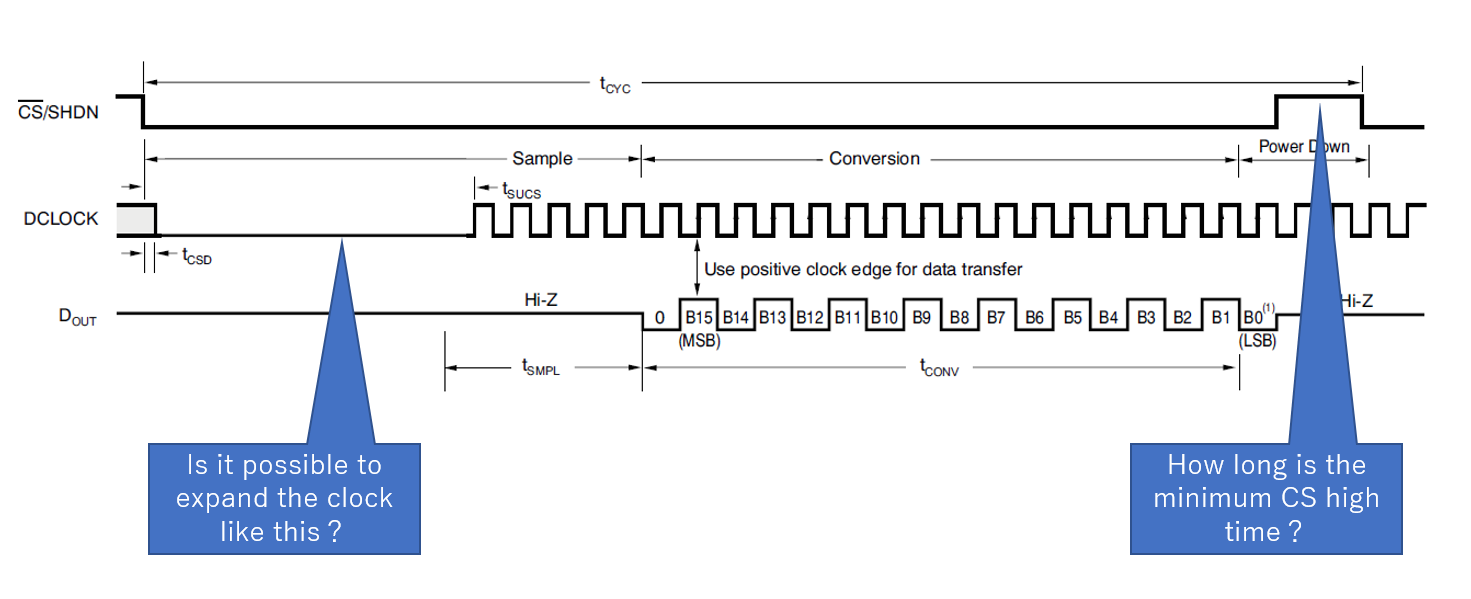Dear Specialists,
My customer is considering ADS8326 and has questions about timing spec.
I would be grateful if you could advise.
---
Could you please see the figure and answer these questions.
(1) Is it possible to expand the Dclock?
(2)How much is the minimum CS high time?
---
I appreciate your great help in advance.
Best regards,
Shinichi


